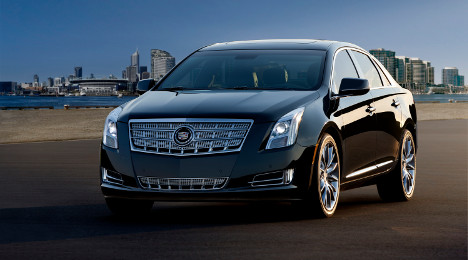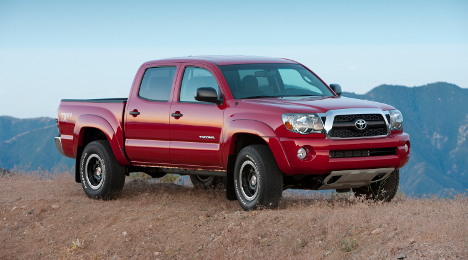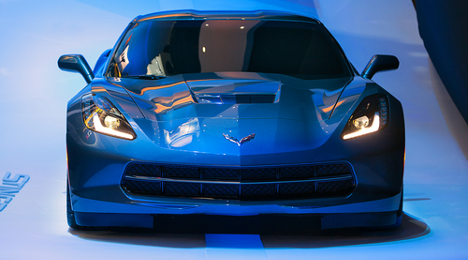How busy was last week in the auction lanes? Well, the per-day vehicle value adjustments that Black Book made was at a level not seen in the past year.
That’s according to the latest weekly video report from the company’s editorial director, Ricky Beggs.
“As we looked over the commentary from the Black Book survey personnel that are scattered all over the country visiting the auction lanes, only two comments did not reference good and busy activity, with firming or stable pricing,” Beggs said. “One indicated the late models were a little down, while another described the 2015 model offerings were not as strong this past week.
“If there was one other less than positive comment, it wasn’t about market values, but our representative on the lanes in Wisconsin, said it was a ‘typical cold January day,’” he added.
The 2,398 vehicle values adjusted each day marked a high “for any week during the past year,” Beggs said.
Not to mention, two-fifths of the overall changes to values were increases. Trucks dominated the positive adjustment activity, as half of them increased in value compared to less than a quarter (23 percent) of cars.
The average segment change for cars was a downward move of $63. Oddly enough, trucks were down, too, in terms of average segment movement.
“The truck market, even with all the positive adjustments we mentioned earlier, still had a higher declining average change amount week over week at -$46 this past week,” Beggs said.
The only truck segment to increase was the compact SUV (up $19).
The complete report can be viewed above.
Trade-in values are on the rise and it appears that, once again, recent movements are particularly rosy for luxury segments, which have maintained the months-long edge they’ve had over their mainstream peers.
The latest issue of Guidelines from NADA Used Car Guide indicates that, overall, there was a 1.2-percent month-over-month increase in trade-in values for the January edition of the Official Used Car Guide.
The split between car (which were increased 1.3 percent) and truck (up 1.1 percent) segments was relatively modest, while the gap between luxury segments and mainstream segments was more noticeable.
With a much stronger performance than mainstream models, trade-in values on luxury segments were bumped up 2.1 percent, nearly double the average gain for mainstream segments (up 1.1 percent), the report said.
“Luxury vehicles have performed better than non-luxury vehicles since October 2014’s edition,” Jonathan Banks, NADA Used Car Guide senior director of vehicle analysis and analytics, said in the report.
In the latest edition, luxury compact utility values climbed 3.1 percent, as it had the best performance of any segment. At the opposite end of the spectrum, large cars declined 0.9 percent.
Going back to the overall industry movement in trade-in values, the 1.2-percent rise for January follows a 4.1-percent month-over-month dip in December, which Banks said (in the December issue of Guidelines) was “the biggest downward movement for the period in the past three years.”

Though supply continues to expand, the year has turned, and the industry has begun looking out toward tax season. Consequently, instead of responding negatively to supply expansion, prices for used vehicles are expected to stay flat to up slightly this month.
According to the latest issue of Guidelines from NADA Used Car Guide, used prices will remain steady this month, with more pronounced increased expected in February and March.
“Coinciding with the steady receipt of tax refund checks, used-vehicle prices gradually improved over a given first quarter before tapering off as spring transitions into summer,” Jonathan Banks, NADA UCG executive automotive analyst, said in the report. “We expect to see a similar pattern play out this year. In addition to seasonality, used-vehicle prices will be most influenced by low gas prices, rising supply and increased new market pressure in 2015.”
By the end of the first quarter, NADA expects prices to average 1.5 percent to 2.5 percent higher than rates seen in December.
Banks pointed out the trucks segments will most likely benefit the most from recent declines in fuel rates. Midsize and large utility, van and pickup prices are expected to rise by 4 percent or more through March, according to NADA UCG data.
On the other hand, subcompact, compact and midsize car prices are scheduled to improve by 1 percent or less over the period, while luxury car and truck prices should grow by roughly 1 percent to 1.5 percent and 2 percent to 2.5 percent, respectively, the report indicated.
Though used-prices traditionally remain strong as consumers prepare to use their tax refunds toward their next vehicle purchase, there is another trend this time around putting even more money in shoppers’ pockets: the decline in gas prices.
According to the Guidelines report, the U.S. Energy Information Administration predicts that regular grade gas prices will average $2.60 per gallon this year, which is 80 cents lower than the 2014 average of $3.37 per gallon.
This drop in gas prices is expected to combine with the positive environment tax season creates at dealerships to support high demand for used vehicles. This demand may serve to keep pre-owned rates strong, even as supply floods the market and new-car incentives spike.
“The drop in pump prices will support demand by leaving more money in consumer wallets. In turn, this will help counteract — but not eliminate — the drag on used-vehicle prices,” said Banks. “The drag stems from an expanding supply of used vehicles and a new vehicle market that is sure to lean even more heavily on incentives than it did last year when discounts grew by 8 percent.”
The industry began seeing signs of an expected significant increase in off-lease supply as 2014 wrapped up with a modest drop in wholesale prices.
According to ADESA Analytical Services, wholesale prices dropped 0.3 percent from November versus last month to rest at an average of $9,844.
This is still up 2 percent year-over-year, but recent downturns may point to signs of a shifting environment.
ADESA chief economist Tom Kontos said in the latest edition of Kontos Kommentary, the results “reflect the ongoing growth and change in the composition of wholesale supply towards greater ‘institutional’ volume (off-lease, off-rental, off-fleet, repos, etc.) versus dealer consignment volume yielding a ‘richer mix’ that elevates average prices even as supply growth applies downward pressure to those prices.”
But this isn’t the only factor that has contributed to used-price strength, even as supply grows. Kontos pointed out new-vehicle incentives have stayed relatively “benign,” which also has played a role in keeping prices strong on the used side.
Strong used-retail sales, specifically certified vehicles, have also contributed. Furthermore, Kontos said, “supply curtailments and disruptions due to weather and recalls occurred throughout the year; and redistribution of volume into multiple remarketing channels” have also lessened the impact that expanding supply normally has on auction values.
Looking at December wholesale price movement on a segment basis, luxury and sporty cars saw some of the biggest price spikes, which Kontos said could primarily have been due to dealers stocking up on these vehicles in time for the holidays.
Prices for luxury cars rose by 2.3 percent from November and were up 2.9 percent year-over-year, to rest at an average of $12,455 last month.
Sporty cars saw an even bigger spike, with prices rising by 3.1 percent from November. At the end of December, sporty cars were going for an average of $12,955 in the lanes, up 7.3 percent year-over-year.
On the other hand, the full-size car segment saw the largest monthly price decline of all, seeing prices drop by a whopping 20.4 percent. The average rate of $6,060 was also 3.9 percent less than rates seen last year.
Minivans also saw prices slide considerably in December, with rates dropping by 6.2 percent from November.
The full-size vans were up next for declines, with a drop in price of 4.5 percent as the year came to a close.
Manufacturers remarketing these vehicles and more were earning quite a bit more on their auction sales in December. Prices were up 9.6 percent from November.
“Sale curtailments due to recalls were a factor in these December results, and ‘factory’ inventories were relatively high entering 2015,” said Kontos. “Thus, the tailwind to prices that might have been provided by the absence of units due to these sale curtailments could turn into a headwind as these units are released in early 2015.”
Prices for fleet/lease consignors saw a more modest spike in price of 1.3 percent. Kontos pointed out off-rental “risk” units saw stronger price retention with this segment or remarketers, “rewarding rental companies that capitalized on the absence of factory units.”
Lastly, dealer consignors saw a 1.7-percent increase in price and a 3-percent rise year-over-year. Kontos said this shows that the wholesale market is readily taking on an excess of dealer trades coming in from strong new-vehicle sales.
2015 Showing Similar Trends So Far
As 2015 gets underway, prices continue to decline, but still only at a modest level.
According to the most recent “Beggs on the Used Car Market” video report, cars saw prices fall by an average of $30 this past week.
The low decline was fueled by strong retention among the compact cars (whose prices were down $7), full-size cars (down $12), upper mid-size cars (down $17) and entry-level cars (down $20).
“It is obvious with these level of changes that the demand for the cars in this price range found in most of these segments that the spring tax season is taking precedent over cheap gas and more full-efficient cars,” Black Book editorial director Ricky Beggs said in the report.
Even as gas prices fell to an average of $2.21 per gallon last week (down $1.12 year-over-year) trends in the lanes are not reflecting this change.
On the truck side of the market, prices fell by an average of $33 last week, which is better than the $55 decline seen during the same timeframe last year.
And trucks touted a positive price adjustment for the first time in quite a while, Beggs said, with the compact SUVs rising by $10.
The compact pickups saw prices stay consistent with the prior week, while the compact crossovers saw a slight decline of $13.
Interestingly, the full-size utilities took biggest declines, contrary to what would be expected with current gas prices.
Full-size SUVs saw a decline of $92, followed by the full-size crossovers (down $83) and the luxury SUVs (down $55).
To view the latest “Beggs on the Used Car Market” report, see the video above.
Manheim reported that wholesale values increased in the fourth quarter by nearly 2 percent to finish 2014 slightly higher than the previous year, as consumer demand for used models remained strong.
The movement left the Q4 reading of the Manheim Used Vehicle Value Index — a measure of wholesale prices adjusted for mix, mileage and season — at 123.9, a 1.8-percent uptick from a year ago and 2.1 percent higher than the third quarter.
Manheim chief economist Tom Webb explained on Thursday that an improving job market and attractive financing helped boost the retail market for new and used vehicles. Webb indicated the strongest demand for used vehicles in the fourth quarter was in the $13,000-to-$15,000 range, a higher sweet spot than a year ago.
As has been reported by Auto Remarketing, Webb also pointed out that sales of certified pre-owned vehicles hit record numbers in 2014.
“The used-vehicle market finished another solid year,” Webb said. “Consumers continue to see great value in purchasing used vehicles, even at higher price points. Dealers continue to see used vehicles as an important and profitable part of their business.”
Manheim determined that fourth quarter wholesale pricing for vehicle segments were as follows:
• Compact car prices were down 1.1 percent in December, compared to the same period last year, as Manheim noticed consumers moved to CUVs and midsize cars.
• Midsize cars had been one of the weaker segments during the year but Manheim noticed values end December 2.2 percent higher than the same period last year.
• Luxury car values fell 0.4 percent on a year-over-year basis, as analysts spotted these units holding their prices despite an increase in supply from off-lease vehicles.
• Pickups and vans remained the strongest segment, with pickups up 6.1 percent and vans up 3.1 percent on a year-over-year basis. Often purchased for business use, Manheim said demand for these vehicles has increased during the year.
• SUV and CUV also continued to be a popular segment, up 2.8 percent in December compared to the same period last year. Manheim said consumers have been moving to compact and midsize CUVs, which offer a balance of room and fuel efficiency.
With new-vehicle sales volumes expected to plateau, Webb emphasized the upcoming year will be critical for the auto industry. As long as automakers keep incentives low for new–model sales, Webb contends that used-vehicle values should remain stable.
“An incentive war, however, would lower new-car prices and also put pressure on dealers to lower used-car prices,” Webb said.
“The growth rate in the U.S. auto market is expected to slow down and level off in 2015,” he continued.
“The big question is whether automakers will be satisfied with their respective slice of the pie,” Webb went on to say. “If they aren’t satisfied and resort to heavy incentives, prices and profits will fall.”
Editor’s Note: More commentary and analysis from Webb’s quarterly conference call will be a part of Monday’s edition of Auto Remarketing Today.
As we inch closer to tax season and the positive price movement and sales jumps that normally come with it, depreciation in the lanes continues to ease.
Black Book data showed December saw a continued lowering in monthly depreciation, and overall, the company asserts that vehicle prices remained resilient throughout 2014 — better than expected, in fact.
Looking at the year as a whole, prices fell by 12.1 percent in 2014, which is down slightly from 2013’s depreciation rate of 12.8 percent.
Black Book was initially projecting annual wholesale price depreciation of 13.5 percent.
“2014 saw an increased number of cars sold compared with the previous year, which means additional trade-in volume would typically drive a rising depreciation rate,” said Ricky Beggs, editorial director at Black Book. “However, despite more trade-in volume in 2014, used car-prices overall increased which translated to stronger-than-normal retention values across the board. Additionally, we saw some of the lowest gas prices in years toward the latter half of 2014, which had an impact on truck and car segment demand and depreciation patterns.”
According to Black Book, the average price of a used vehicle for model years 2009 through 2013 fell by 1 percent in December, compared to a 1.9-percent drop on a monthly basis in November.
During the last month of the year, depreciation was slight: domestic cars dropped by 1.4 percent; import cars fell 1.1 percent; domestic trucks declined by 0.6 percent; and import trucks slid 0.9 percent.
Looking at the last 12 months, domestic trucks saw the lowest depreciation for 2014, declining by 9.1 percent. Domestic cars ended up at the other side of the spectrum with 15.9-percent depreciation.
Interestingly, although trucks saw the lowest depreciation rates this year, they represented four of the six segments leading price declines this past month.
For example, last month, the cargo minivans saw the biggest price drops out of any segment, with rates falling by 1.8 percent.
On a segment level, the biggest depreciation over the course of 2014 was seen among the prestige luxury cars. This segment finished the year with a whopping 18.1-percent decline in rates.
Luxury-level cars performed poorly during the last month of the year, as well, seeing the highest monthly depreciation among all car segments of 1.6 percent. Vehicles in this segment finished the month at $20,574, a 16.8-percent drop from year-ago levels ($24,742).
Full-size passenger vans were the only segment to see prices rise last year. As of the end of 2014, the segment had seen a positive change of 3.5 percent.
Vans performed well during the last month of the year, as well. Full-size cargo vans and full-size passenger vans finished December with a monthly spike in price of 0.5 percent.
Recapping a month where auction values jumped 0.9 percent year-over-year, Kelley Blue Book has shared the 10 individual models whose prices climbed the highest in the lanes during December.
In its latest Blue Book Market Report, the company took the Kelley Blue Book Auction Value of 2011 through 2013 model-year vehicles, then listed the following as having the largest increases last month. Four-week percentages are in parenthesis:
1. Ford C-MAX Hybrid (6.1 percent)
2. Mazda MAZDA2 (5.8 percent)
3. Mitsubishi Endeavor (4.3 percent)
4. Chevrolet Cruze (3.9 percent)
5. Nissan Versa (3.3 percent)
6. Acura ZDX (3.2 percent)
7. Ford Fiesta (3.0 percent)
8 (tie). BMW X1 (2.8 percent), Nissan JUKE (2.8 percent)
10. BMW X3 (2.6 percent)
Best Performing Segments
As reported previously by Auto Remarketing, the top segment at the auction, in terms of price increases, during the last month of 2014 was the midsize car, which was up 0.9 percent.
The No. 2 segment on the list was the subcompact car with a 0.8-percent hike in auction price (based on increases in Kelly Blue Book Auction Value for 2011–2013 model-year vehicles).
After the midsize and compact cars, the next strongest segment gains in the top five rankings were for the compact SUV/crossover and compact cars (both up 0.6 percent), followed by the luxury compact SUV/crossover (up 0.4 percent).
Conversely, the biggest declines were seen in the sporty compact cars (down 7.1 percent), followed by the electric vehicles (down 3.8 percent), minivans/vans (down 2.1 percent), high-performance cars (down 2.0 percent) and luxury cars (down 1.8 percent).
Throughout most of 2014, trucks remained popular, but perhaps most notably, showed significantly stronger price retention than their smaller counterparts. And the story was no different during the last month of the year.
The midsize pickups trucks, in particular, saw prices hold the strongest this past month out of all vehicle segments, according to Kelly Blue Book’s December Blue Book Market Report.
Among the 20 vehicle segments KBB tracks, the mid-size pickups saw the best retained value, averaging retention of almost 78 percent.
“On average, truck segments tend to hold their value better than their SUV and car counterparts. As we continue to see a decline in fuel prices, we can expect an increase in demand and thus higher retentions to continue throughout the truck segments,” said Sean Foyil, analyst for Kelley Blue Book.
The midsize SUV/crossover segment came in second place for retention last month, with an average retention rate of 66.5 percent — considerably weaker than the midsize pickup truck segment.
The luxury and compact car segments retained 61 percent and 60 percent of their values on average, respectively, which ranks them Nos. 12 and 14 overall.
Making up the bottom of the list are subcompact, midsize and full-size car segments, which ranked Nos. 17, 18 and 19, overall.
The electric vehicles segment ranked the lowest at an average of 46 percent average retention.
This lineup is perhaps not surprising, given the current fuel price environment. The average price for regular conventional retail gasoline reached a low of $2.49 nationally in December, according to the report.
This marks a 67-cent year-over-year drop from 2013 and is pushing many consumers to consider trucks and SUVs, rather than more fuel-efficient choices. In turn, this demand is contributing to strength in truck prices and putting pressure on retention for the more fuel-efficient segments.
To wrap up another year of providing the wholesale and retail community with weekly auction price updates, Black Book editorial director Ricky Beggs offered a special two-part series.
In the end-of-year “Used Car Market Report,” Beggs sits down with National Auto Auction Association president Ellie Johnson and president-elect Mike Browning to discuss this year’s highlights as well as what’s in store for 2015.
In Part I of the Black Book interview, Beggs focused on the NAAA executives’ career backgrounds.
This time around, Part II focused on expanding used supply and what it means for the wholesale industry.
Off-lease supply is predicted to spike considerably this year, and new-car sales are booming, meaning more trade-ins to be sold at auction.
Beggs touched on this topic, asking both Johnson and Browning how this impending supply increase will impact the auction market.
Browning said, “I think the physical auctions are going to be needed now more than ever. To liquidate the assets of supply saturation we aren’t used to, we are going to need physical locations.”
And Johnson said auctions should ramp up training in an effort to stay prepared for a busier period.
Johnson said, “We will have to make sure we are up-to-date on all of our training, whether you are a chain auction or an independent, make sure all of your team is up-to-date on it and service to the customer is key."
But with more supply comes lower prices. That said, when asked about the potential impact on wholesale values, Johnson didn’t seem very concerned.
“I think they are going to drop a little bit, but I think the demand is still going to be there. We have been without a good inventory for a good time now, so I think the demand is going to stay there,” Johnson said.
Beggs also touched on another aspect in a market that is looking more and more like the one seen pre-recession. And with this shift comes loosening credit. Beggs asked the NAAA execs whether they had seen an uptick in repo vehicles in the lanes, due to looser credit conditions.
“I think it is a pretty good market. We haven’t seen much increase. Yes, our customers have more volume, but that may be from acquisitions. I think they are making smarter loans, and they are not as loose as they were before 2008, so I think it’s been good,” Johnson said.
Browning added, “I think the lending practices have gotten better and a lot smarter. We have seen a little raise, but that is most likely due to the volume of the loans.
“Will we see more? Sure, but I don’t think we will ever get back to the levels seen before (during the recession),” he concluded.
As for what NAAA leadership will be focusing on over the course of the new year, Johnson said one of the key areas of focus will be safety.
“Safety is everybody’s responsibility, from the employee to the customer. We are forming a committee now that is scheduled to meet in February, part Manheim, ADESA and some of the independents, or how important safety is and the awareness,” Johnson said.
Browning explained the association will also be focusing on member engagement.
To view the full interview, see above.
The December 2014 issue of the NADA Used Car Guide's Perspective featured part-two of its retention review, this time focusing on the value retention of several mainstream models, all of which were either all-new or heavily revised for the 2014 model year (see part one of the review, for luxury vehicles, here).
In the Retention Review, NADA used retention calculation based on a three-month average (October through December of 2014) of NADA’s average trade-in value divided by the vehicle’s typically equipped MSRP, sourced from data from ALG and the NADA Used Car Guide. The company noted that MSRPs provided do not include any incentives or rebates available at the time of purchase.
The following data was provided by the NADA via the December edition of Perspective.
2014 Upper Sports Car Average 1-Year Retention = 70.0 percent
- 2014 Chevrolet Corvette Stingray Coupe 1LT Automatic 1-Year Retention = 84.7 percent
- 2014 Chevrolet SS 6.2L V8 1-Year Retention = 71.6 percent
Sitting highest in retention rate after one year for all redesigned models is Chevrolet’s halo upper sport car, the Corvette Stingray. Despite its price increase of nearly 7 percent over its 2013 predecessor, the car’s price retention of 84.7 percent bested the previous year by an astounding 10.7 percentage points. The Corvette’s sport sedan brother, the Chevrolet SS, was all-new for 2014 and put up a decent retention rate of 71.6 percent, a 1.6 percent advantage over the segment’s average of a flat but still impressive 70.0 percent.
2014 Compact Utility Average 1-Year Retention = 68.9 percent
- 2014 Jeep Cherokee Sport 4WD 2.4L I4 1-Year Retention = 72.7 percent
- 2014 Mitsubishi Outlander SE 4WD 2.4L I4 1-Year Retention = 67.1 percent
- 2014 Nissan Rogue S AWD 2.5L I4 1-Year Retention = 73.1 percent
- 2014 Subaru Forester i Premium AWD 2.5L H4 1-Year Retention = 81.8 percent
2014 Sport Car Average 1-Year Retention = 67.9 percent
- 2014 Mini Cooper 1.5L I3 Turbo 1-Year Retention = 72.7 percent
2014 Midsize Utility Average 1-Year Retention = 67.6 percent
- 2014 Toyota 4Runner SRS 4WD 4.0L V6 1-Year Retention = 77.1 percent
- 2014 Toyota Highlander LE 4WD 3.5L V6 1-Year Retention = 78.8 percent
2014 Int. Compact Car Average 1-Year Retention = 65.2 percent
- 2014 Toyota Corolla L 1.8L I4 1-Year Retention = 70.4 percent
- 2014 Kia Forte Sedan EX 2.0L I4 1-Year Retention = 61.8 percent
- 2014 Mazda Mazda3 i Sport 2.0L I4 1-Year Retention = 68.7 percent
2014 Entry Subcompact Car Average 1-Year Retention = 64.8 percent
- 2014 Mitsubishi Mirage DE 1.2L I3 1-Year Retention = 54.5 percent
2014 Large Pickup Truck Average 1-Year Retention = 64.7 percent
- 2014 GMC Sierra Crew Cab SLE 4WD 5.3L V8 1-Year Retention = 72.7 percent
- 2014 Chevrolet Silverado Crew Cab LT 4WD 5.3L V8 1-Year Retention = 69.7 percent
Despite the Sierra’s $5,000 increase over the most popular model for 2013, the truck’s retention percentage increased by 7.2 percentage points, up from 65.5 percent, and also outpaced the segment’s retention by 7 percent. Following shortly behind was the Silverado, boasting a 6.2 percent increase in percentage points over 2013’s retention of 63.5 percent.
2014 Int. Subcompact Car Average 1-Year Retention = 62.4 percent
- 2014 Fiat 500L Pop 1.4L I4 Turbo 1-Year Retention = 55.3 percent
- 2014 Kia Soul + 2.0L I4 1-Year Retention = 56.5 percent
2014 Upper Midsize Car Average 1-Year Retention = 61.2 percent
- 2014 Kia Cadenza Premium 3.3L V6 1-Year Retention = 56.5 percent
2014 Int. Midsize Car Average 1-Year Retention = 61.2 percent
- 2014 Mazda Mazda6 i Sport 2.5L I4 1-Year Retention = 70.6 percent
2014 Large Car Average 1-Year Retention = 55.6 percent
- 2014 Chevrolet Impala LS 2.5L I4 1-Year Retention = 59.9 percent
Alone in it segment for redesigns, the 2014 Impala improved its retention rate over its 2013 predecessor by 9.1 percentage points (50.8 percent), but still fell far short of the segment’s average retention rate of 59.9 percent.
For more specific information regarding each of these models and their respective strengths/weaknesses, check out the NADA’s Perspective.












